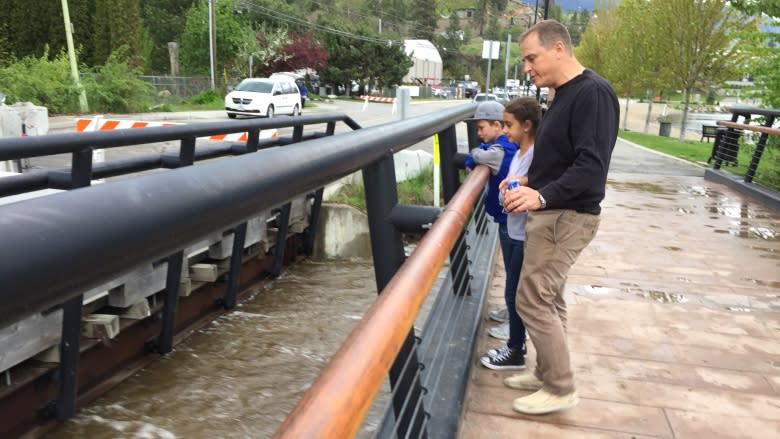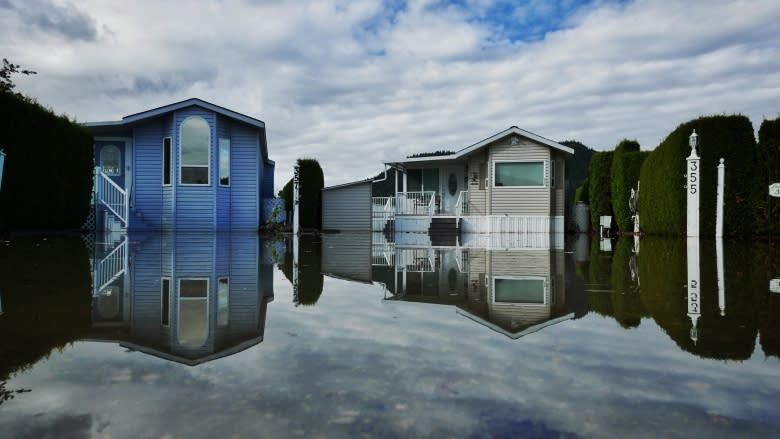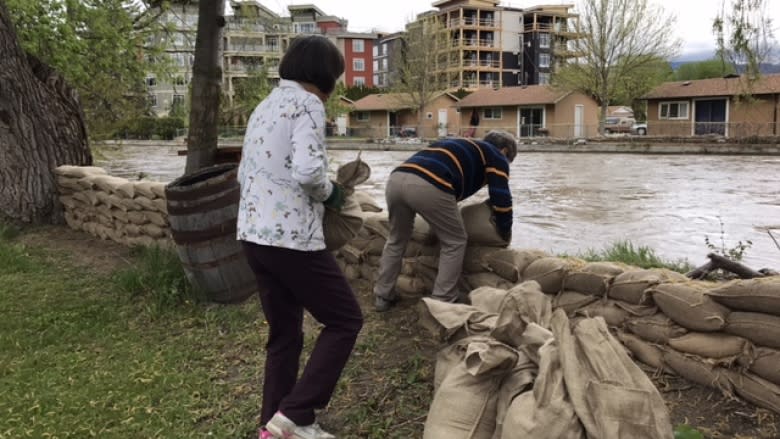Land use and climate change could increase flood frequency, experts say
Residents of B.C.'s Okanagan Valley spent much of this week preparing for unprecedented levels of flooding — but it's far from the last time they'll have to do so.
As global temperatures continue to rise, studies have shown an increase in extreme weather and predict that trend will continue.
And as development continues to occur in and around floodplains, experts say the result is that communities are increasingly at risk of flooding.
Much of the Kelowna's downtown is built on a floodplain, Todd Cashin, the city's manager of suburban and rural planning told CBC News on Thursday.
Hans Schreier, professor emeritus in the department of land and water systems at the University of British Columbia, says future development needs to take more prevalent extreme weather into account.
"We need to really rethink our land use policies and we need to change the way we develop the floodplains, because these extreme events will obviously be the norm," Schreier said.
Warmer air means more moisture
An increasing body of scientific evidence shows that human-driven climate change is leading to more frequent severe weather events — including snowfall.
Warmer air can hold more moisture, Schreier said, which leads to more precipitation. But that's not the whole story.
In a 2012 paper, Kevin Trenberth — a climate scientist at the National Center for Atmospheric Research in Colorado — found that, as average temperatures rise, we should expect to see record levels of precipitation more often.
As well, a 2017 study lead by Michael Mann of the Earth System Science Center at Penn State University found that human activity is altering the behaviour of the jet stream — a sort of atmospheric conveyor belt that moves heat and moisture around the northern hemisphere — in a way that is causing storm systems to stall more often.
These stalled systems result in longer bouts of extreme weather, both wet and dry.
All of this is to say that prolonged, record-breaking storm systems — like those that have caused flooding across the country this week — are only going to become more common.
City on a floodplain
But more precipitation is only part of the picture. Schreier said a propensity to develop floodplains and areas adjacent to floodplains not only put more people in harm's way, but also reduces the natural capacity of the land to store water without flooding.
"When we pave everything and compact all the soils, the water can no longer infiltrate, which means it's going to run off the surface," Schreier said.
The effect is compounded, Schreier said, by forest fires — which, though a natural part of the forest life cycle, are also becoming more common.
"Once you have fires, you have hydrophobicity, which is [when] the soil becomes water-repellant, and then you have more surface runoff."
Later is now
These are all things scientists have known for some time, but they don't seem to have become common knowledge yet.
Schreier has an idea as to why that might be.
"I think we have made a big mistake [as scientists] by telling everybody that [climate change means] it's going to get two to three degrees warmer on average," he said. "What we should have told people is, it's going to get more extreme."
Schreier says preparations need to be made now, because climate change is already here.
"People think of climate change as [something that's] going to happen down the road, but this is clearly evidence that it's happening now," he said.
"We need to really wake up and prepare ourselves."
With files from CBC Radio One's The Early Edition.




